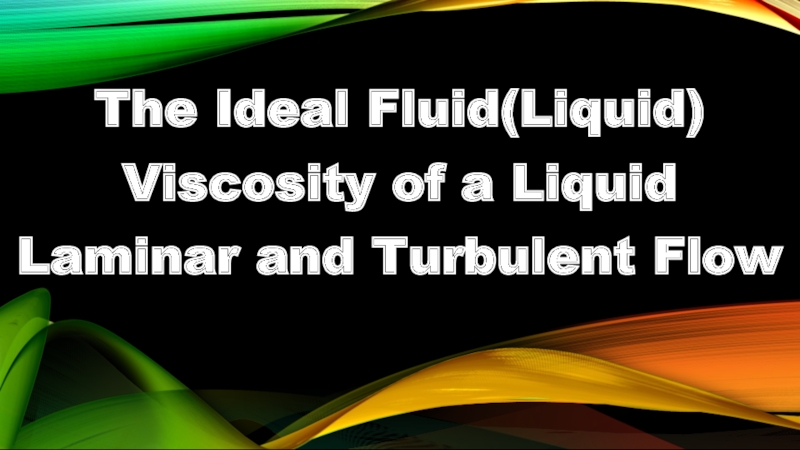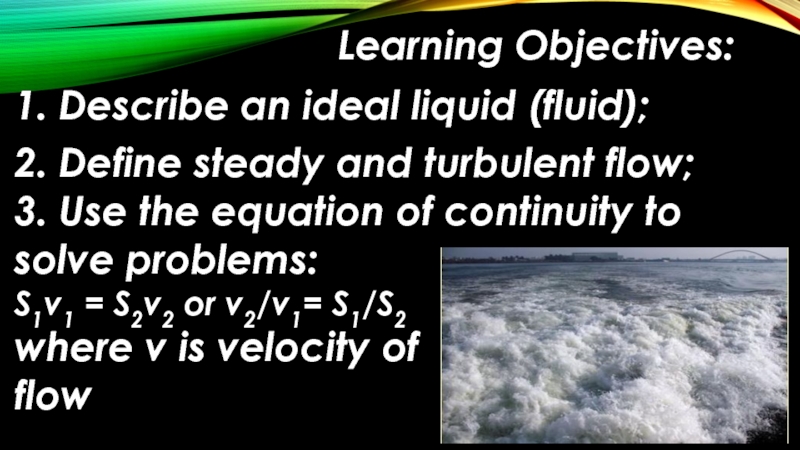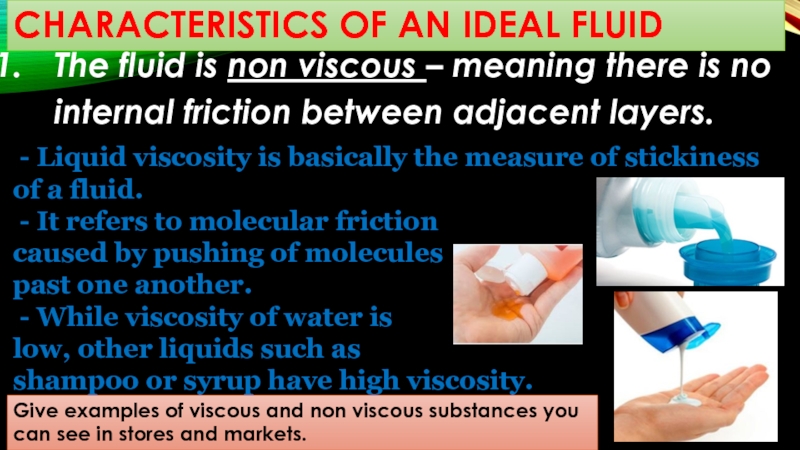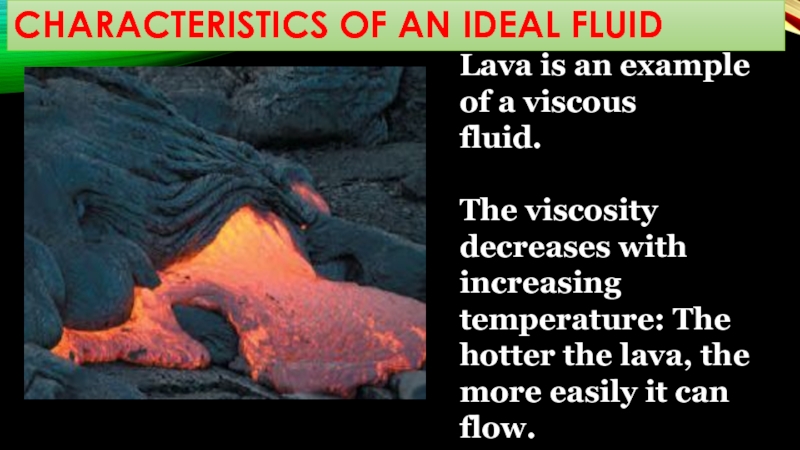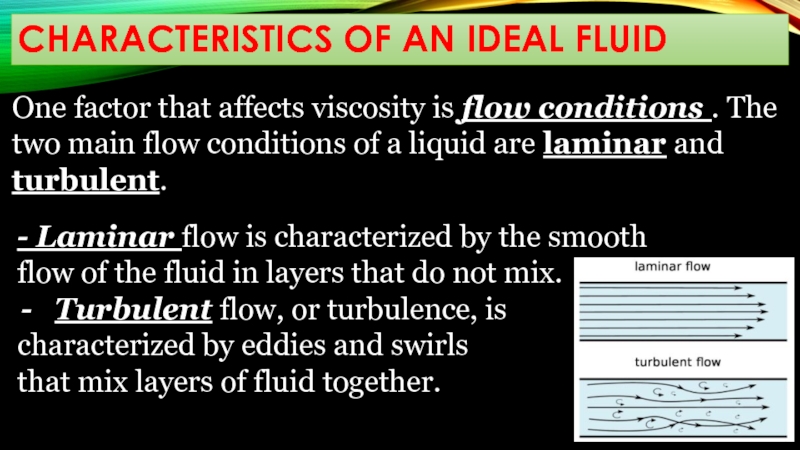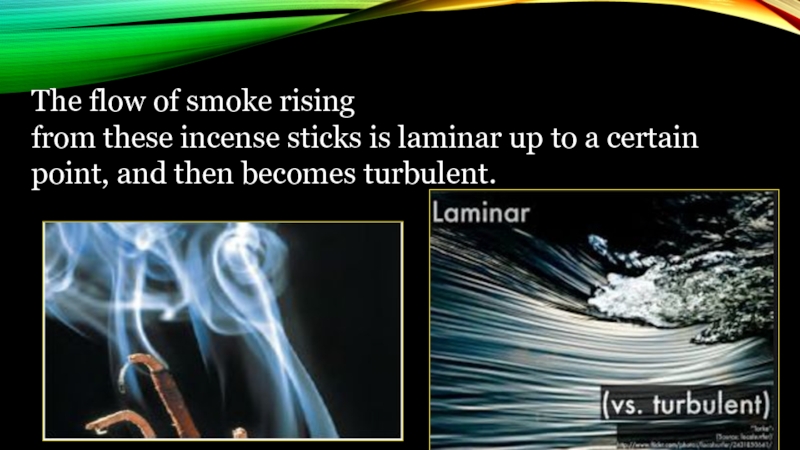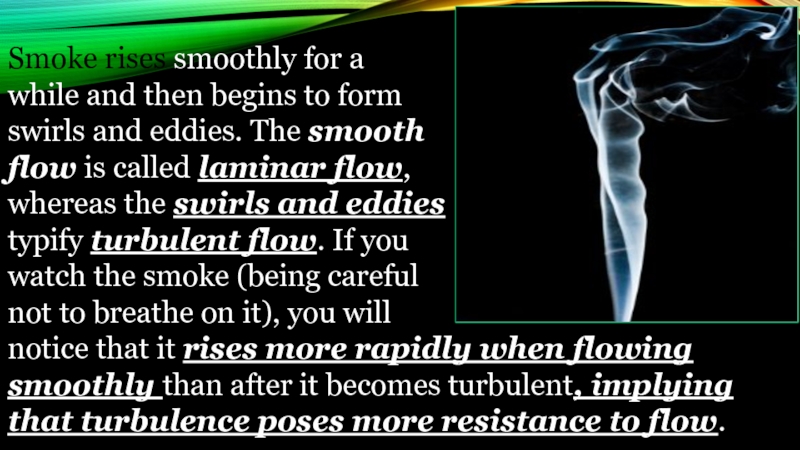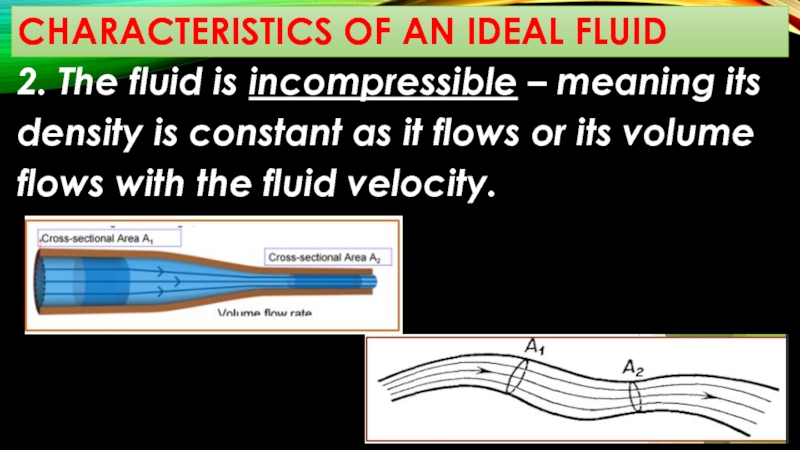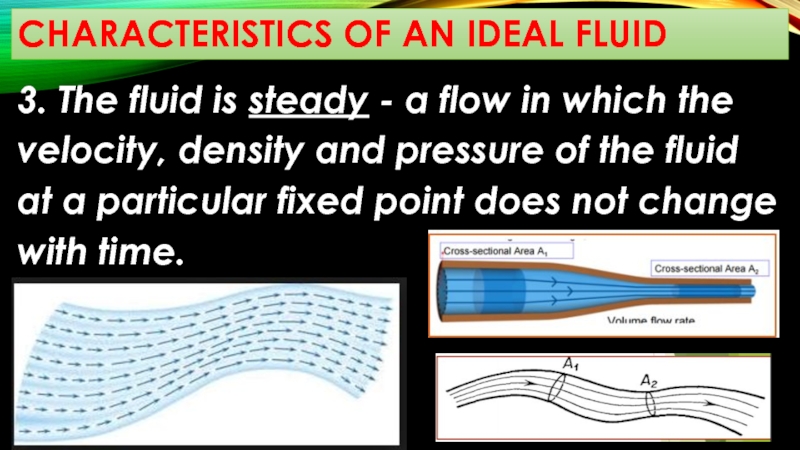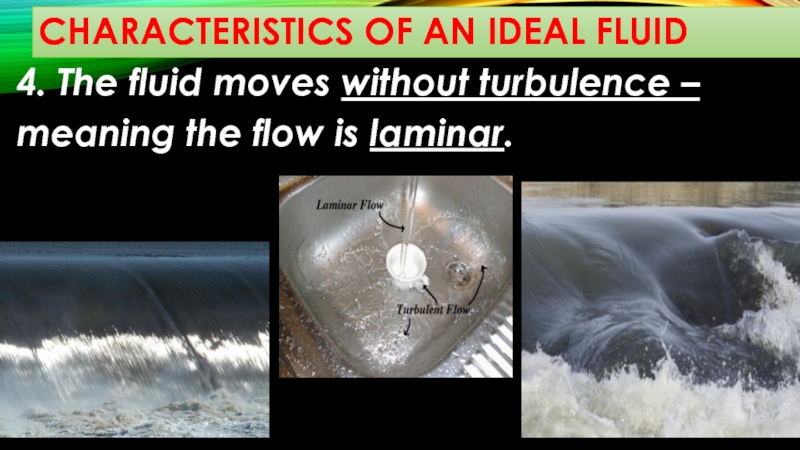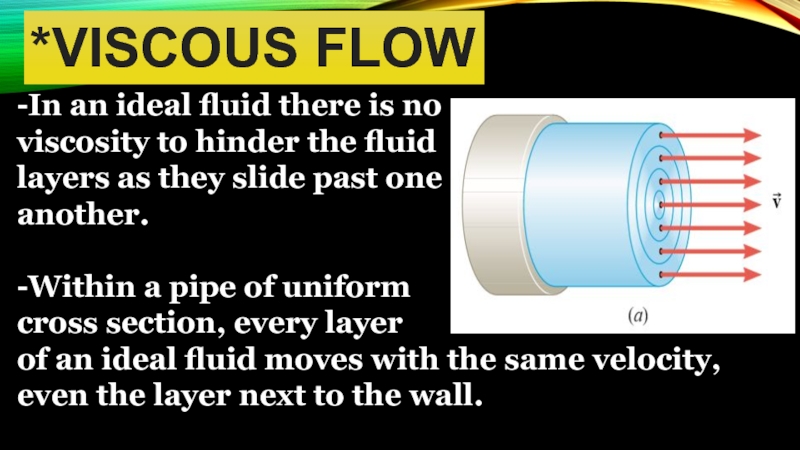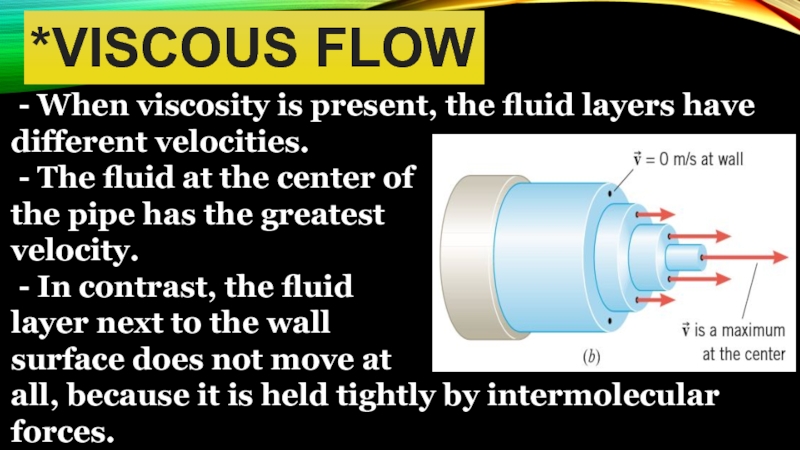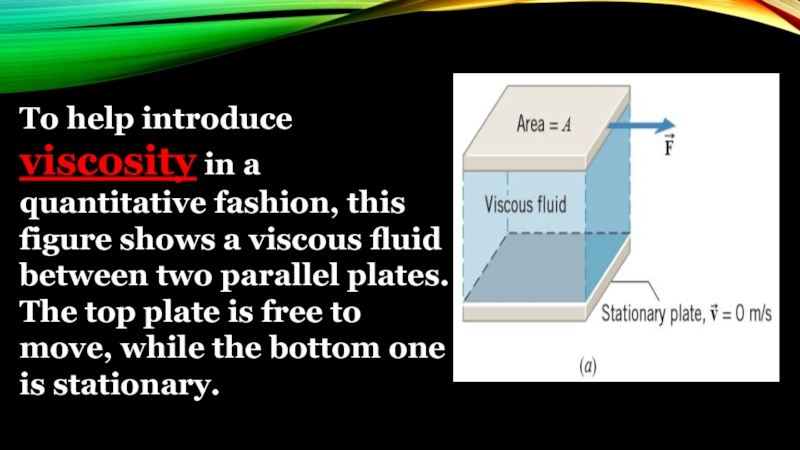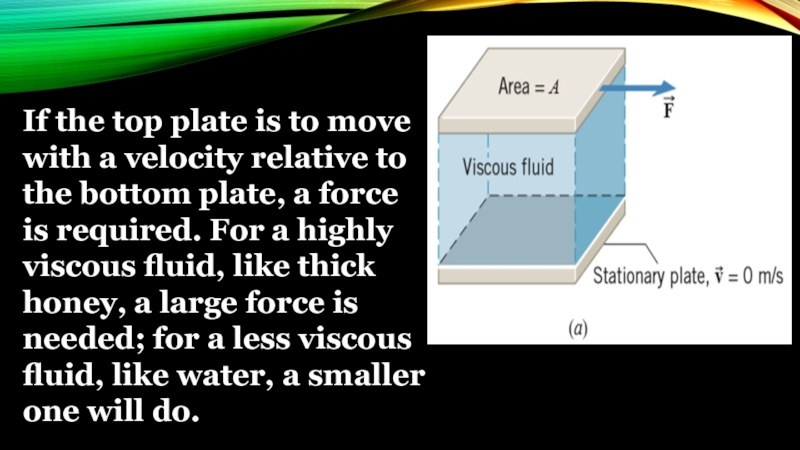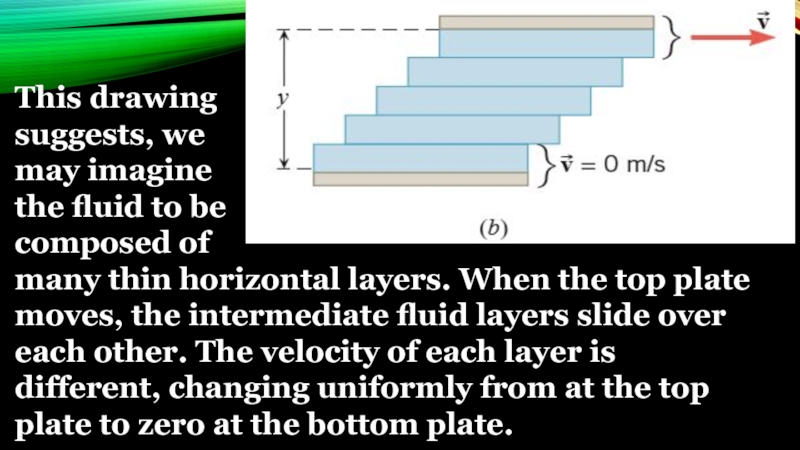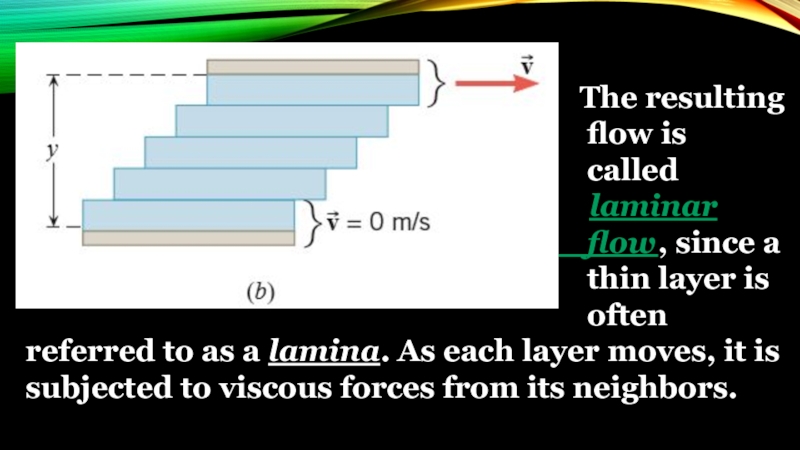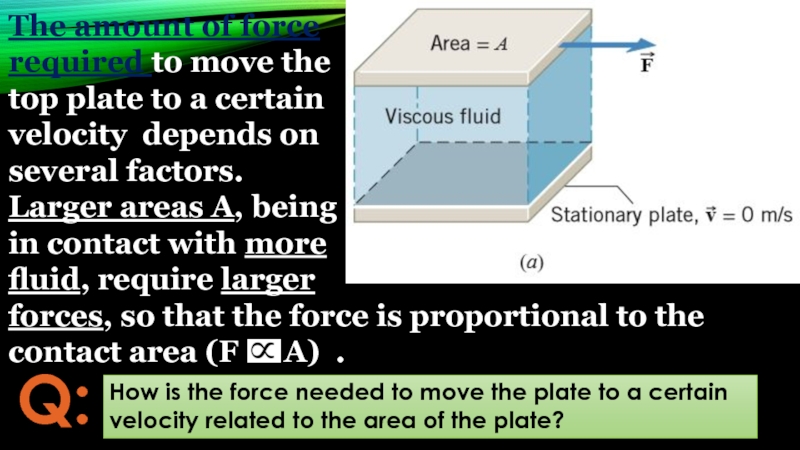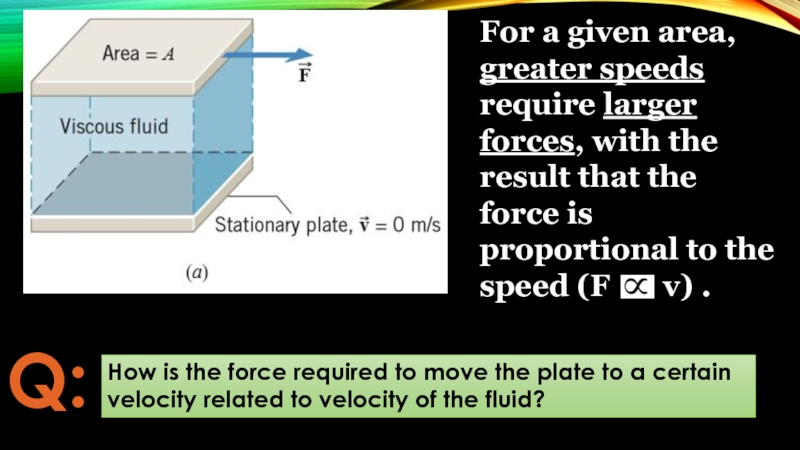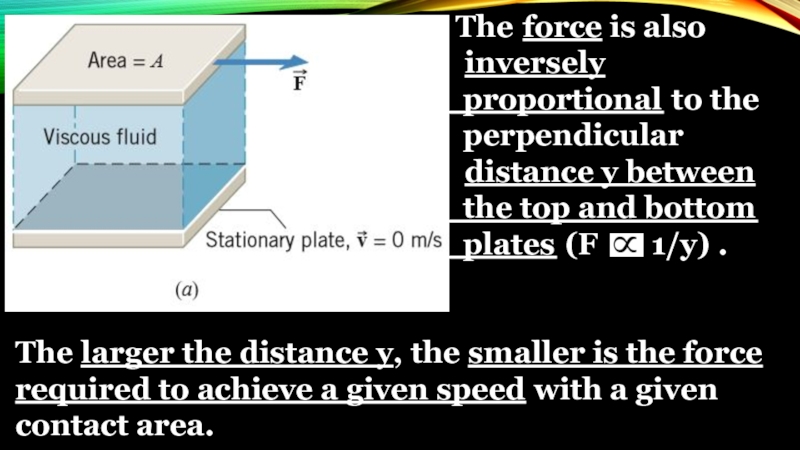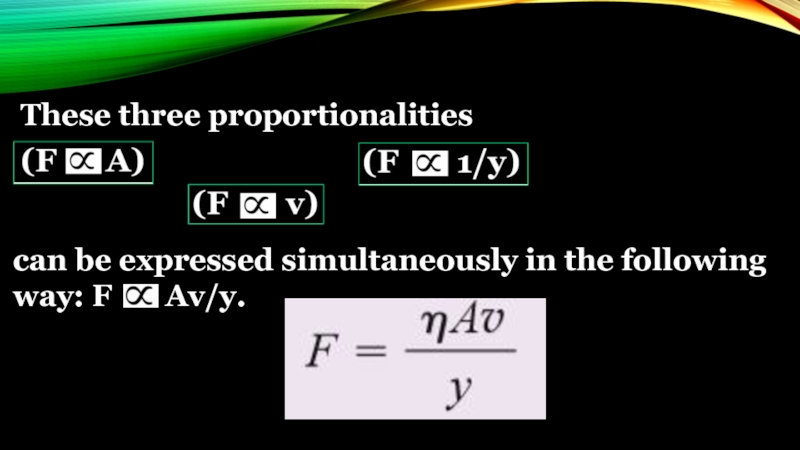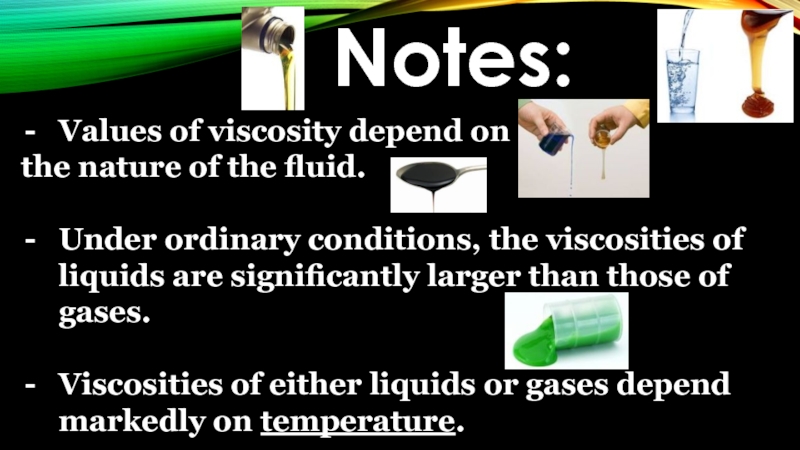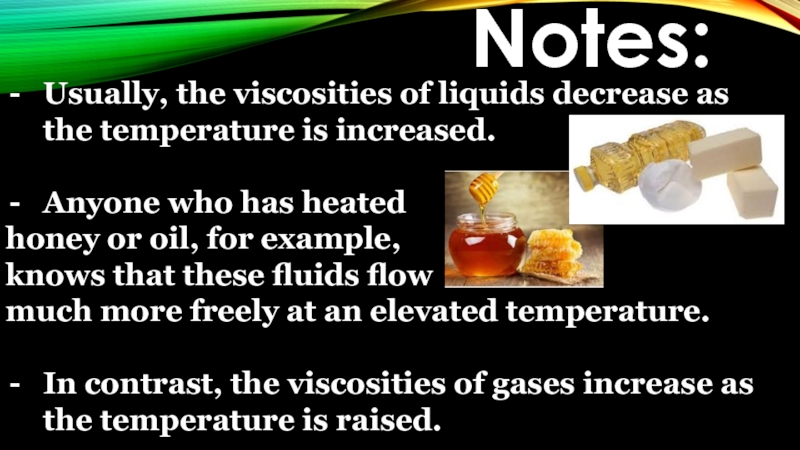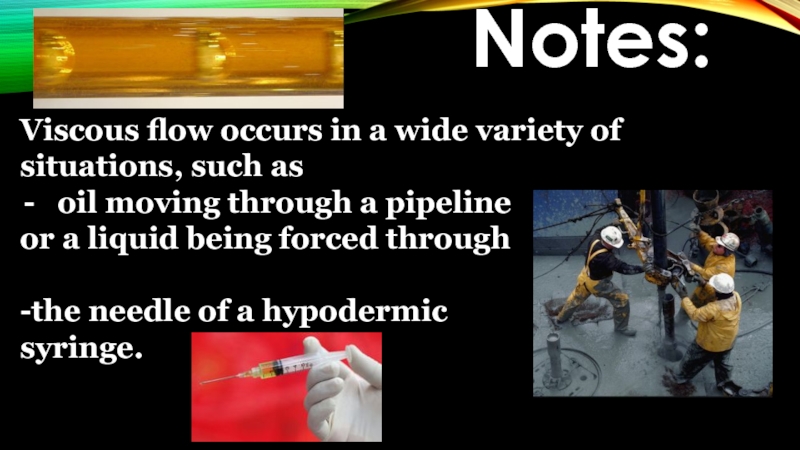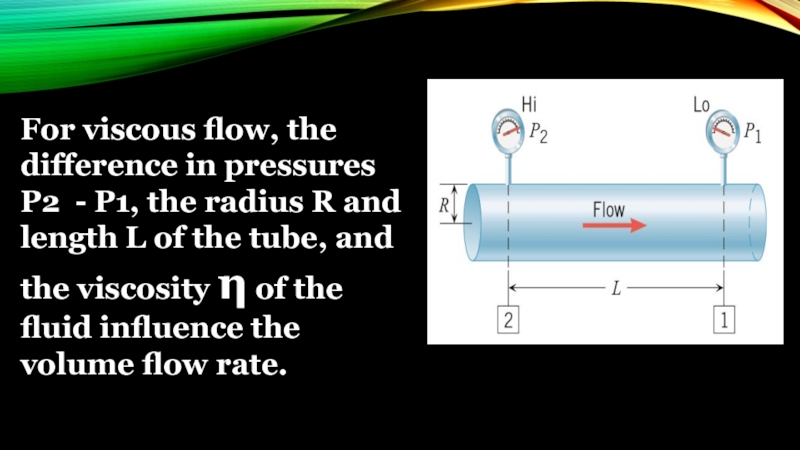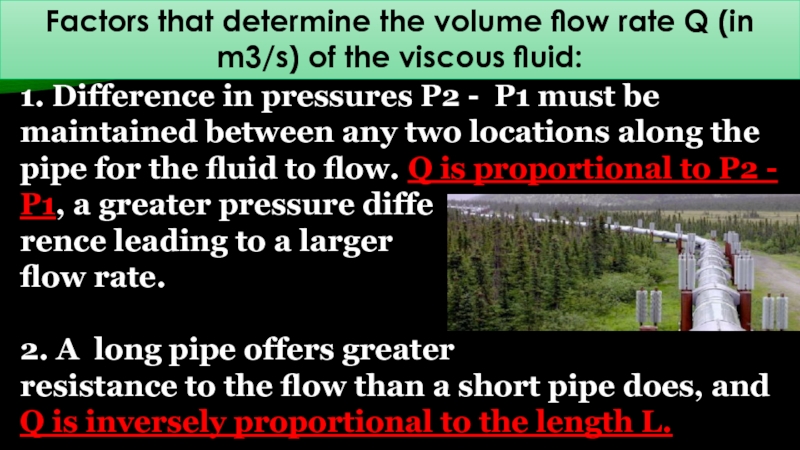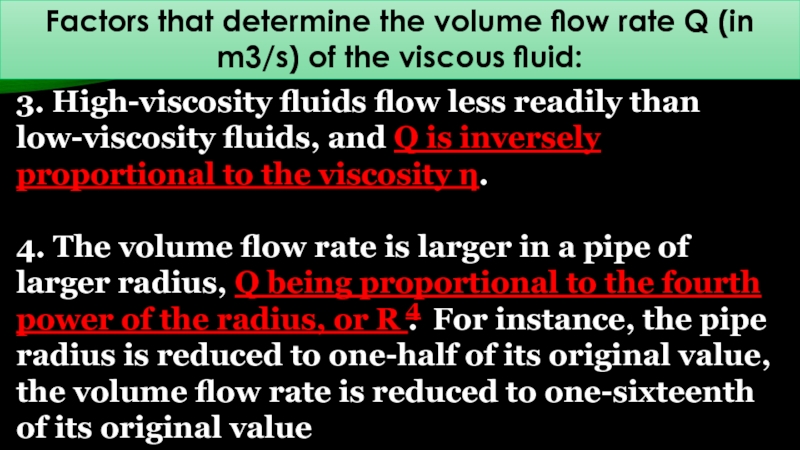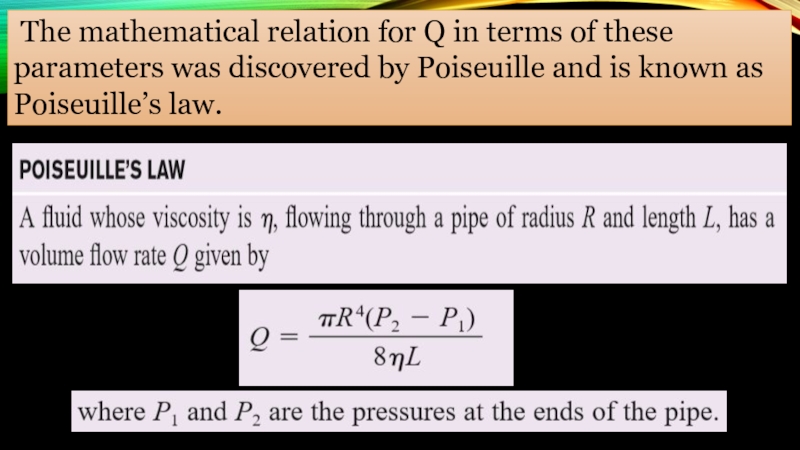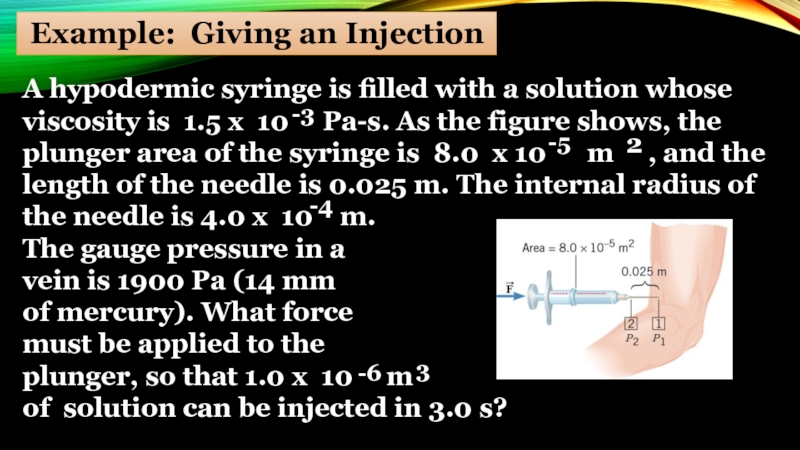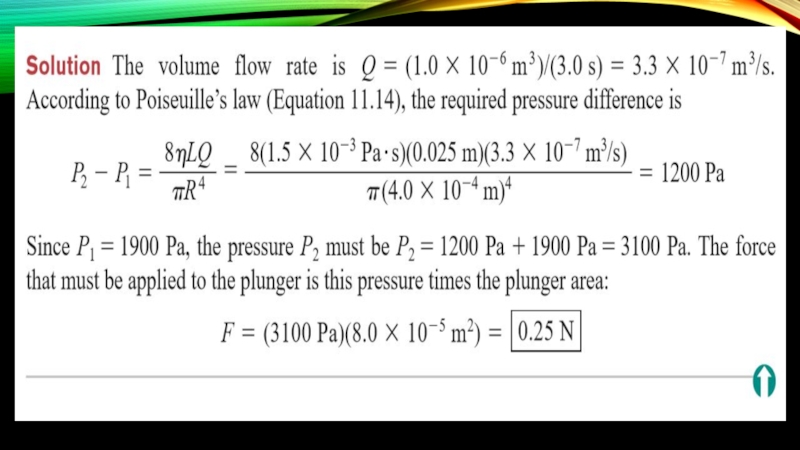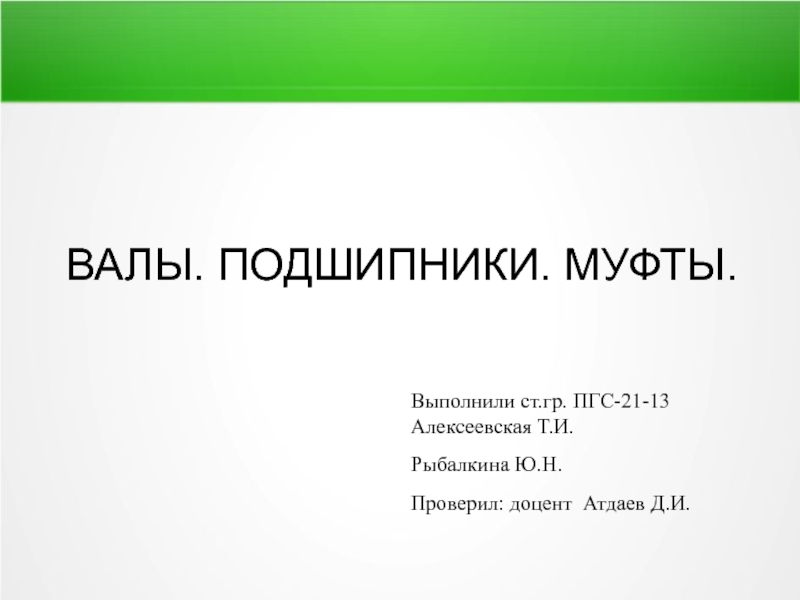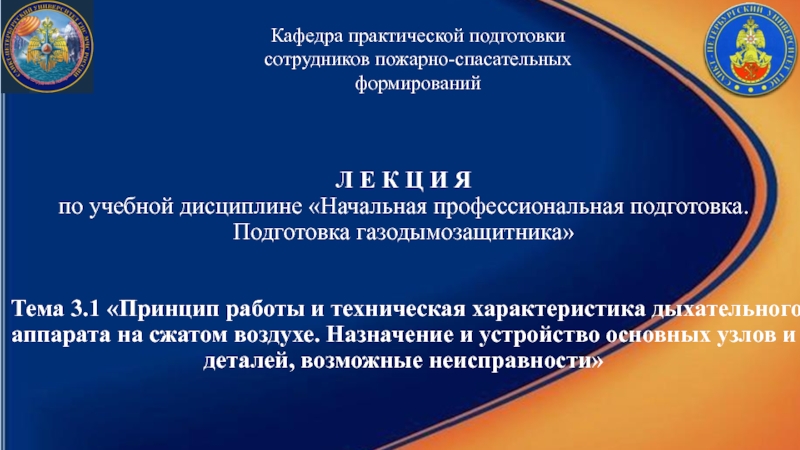- Главная
- Разное
- Дизайн
- Бизнес и предпринимательство
- Аналитика
- Образование
- Развлечения
- Красота и здоровье
- Финансы
- Государство
- Путешествия
- Спорт
- Недвижимость
- Армия
- Графика
- Культурология
- Еда и кулинария
- Лингвистика
- Английский язык
- Астрономия
- Алгебра
- Биология
- География
- Детские презентации
- Информатика
- История
- Литература
- Маркетинг
- Математика
- Медицина
- Менеджмент
- Музыка
- МХК
- Немецкий язык
- ОБЖ
- Обществознание
- Окружающий мир
- Педагогика
- Русский язык
- Технология
- Физика
- Философия
- Химия
- Шаблоны, картинки для презентаций
- Экология
- Экономика
- Юриспруденция
The Ideal Fluid (Liquid) Viscosity of a Liquid Laminar and Turbulent Flow презентация
Содержание
- 1. The Ideal Fluid (Liquid) Viscosity of a Liquid Laminar and Turbulent Flow
- 3. CHARACTERISTICS OF AN IDEAL FLUID The fluid
- 4. CHARACTERISTICS OF AN IDEAL FLUID Lava is
- 5. One factor that affects viscosity is flow
- 6. The flow of smoke rising from
- 7. Smoke rises smoothly for a while
- 8. 2. The fluid is incompressible – meaning
- 9. CHARACTERISTICS OF AN IDEAL FLUID 3. The
- 10. CHARACTERISTICS OF AN IDEAL FLUID 4. The
- 11. *VISCOUS FLOW -In an ideal fluid there
- 12. *VISCOUS FLOW - When viscosity is
- 13. To help introduce viscosity in a quantitative
- 14. If the top plate is to move
- 15. This drawing suggests, we may
- 18. Q: How is the force required to
- 20. These three proportionalities
- 22. Values of viscosity depend on the
- 23. Usually, the viscosities of liquids decrease as
- 24. Viscous flow occurs in a wide variety
- 25. For viscous flow, the difference in pressures
- 26. Factors that determine the volume flow rate
- 27. 3. High-viscosity fluids flow less readily than
- 28. The mathematical relation for Q in
- 29. Example: Giving an Injection A hypodermic
Слайд 2
1. Describe an ideal liquid (fluid);
2. Define steady and turbulent flow;
3. Use the equation of continuity to solve problems:
S1v1 = S2v2 or v2/v1= S1/S2
where v is velocity of
flow
Слайд 3CHARACTERISTICS OF AN IDEAL FLUID
The fluid is non viscous – meaning
- Liquid viscosity is basically the measure of stickiness of a fluid.
- It refers to molecular friction
caused by pushing of molecules
past one another.
- While viscosity of water is
low, other liquids such as
shampoo or syrup have high viscosity.
Give examples of viscous and non viscous substances you
can see in stores and markets.
Слайд 4CHARACTERISTICS OF AN IDEAL FLUID
Lava is an example of a viscous
fluid.
The viscosity decreases with increasing
temperature: The hotter the lava, the
more easily it can flow.
Слайд 5One factor that affects viscosity is flow conditions . The two
- Laminar flow is characterized by the smooth flow of the fluid in layers that do not mix.
Turbulent flow, or turbulence, is
characterized by eddies and swirls
that mix layers of fluid together.
CHARACTERISTICS OF AN IDEAL FLUID
Слайд 6The flow of smoke rising
from these incense sticks is laminar
Слайд 7Smoke rises smoothly for a
while and then begins to form
swirls and eddies. The smooth
flow is called laminar flow,
whereas the swirls and eddies
typify turbulent flow. If you
watch the smoke (being careful
not to breathe on it), you will
notice that it rises more rapidly when flowing smoothly than after it becomes turbulent, implying that turbulence poses more resistance to flow.
Слайд 82. The fluid is incompressible – meaning its density is constant
CHARACTERISTICS OF AN IDEAL FLUID
Слайд 9CHARACTERISTICS OF AN IDEAL FLUID
3. The fluid is steady - a
Слайд 10CHARACTERISTICS OF AN IDEAL FLUID
4. The fluid moves without turbulence –
Слайд 11*VISCOUS FLOW
-In an ideal fluid there is no
viscosity to hinder
layers as they slide past one
another.
-Within a pipe of uniform
cross section, every layer
of an ideal fluid moves with the same velocity, even the layer next to the wall.
Слайд 12*VISCOUS FLOW
- When viscosity is present, the fluid layers have
- The fluid at the center of
the pipe has the greatest
velocity.
- In contrast, the fluid
layer next to the wall
surface does not move at
all, because it is held tightly by intermolecular forces.
Слайд 13To help introduce viscosity in a quantitative fashion, this figure shows
Слайд 14If the top plate is to move
with a velocity relative
the bottom plate, a force
is required. For a highly
viscous fluid, like thick
honey, a large force is
needed; for a less viscous
fluid, like water, a smaller
one will do.
Слайд 15This drawing
suggests, we
may imagine
the fluid to be
composed
many thin horizontal layers. When the top plate moves, the intermediate fluid layers slide over each other. The velocity of each layer is different, changing uniformly from at the top plate to zero at the bottom plate.
Слайд 16
flow is
called
laminar
flow, since a
thin layer is
often referred to as a lamina. As each layer moves, it is subjected to viscous forces from its neighbors.
Слайд 18Q:
How is the force required to move the plate to a
Слайд 19
inversely
proportional to the
perpendicular
distance y between
the top and bottom
plates (F 1/y) .
The larger the distance y, the smaller is the force required to achieve a given speed with a given contact area.
Слайд 20 These three proportionalities
can be expressed simultaneously in the following
Слайд 22Values of viscosity depend on
the nature of the fluid.
Under
Viscosities of either liquids or gases depend markedly on temperature.
Notes:
Слайд 23Usually, the viscosities of liquids decrease as the temperature is increased.
Anyone who has heated
honey or oil, for example,
knows that these fluids flow
much more freely at an elevated temperature.
In contrast, the viscosities of gases increase as the temperature is raised.
Notes:
Слайд 24Viscous flow occurs in a wide variety of situations, such as
oil moving through a pipeline
or a liquid being forced through
-the needle of a hypodermic
syringe.
Notes:
Слайд 25For viscous flow, the difference in pressures P2 - P1, the
Слайд 26Factors that determine the volume flow rate Q (in m3/s) of
1. Difference in pressures P2 - P1 must be maintained between any two locations along the pipe for the fluid to flow. Q is proportional to P2 - P1, a greater pressure diffe
rence leading to a larger
flow rate.
2. A long pipe offers greater
resistance to the flow than a short pipe does, and Q is inversely proportional to the length L.
Слайд 273. High-viscosity fluids flow less readily than low-viscosity fluids, and Q
4. The volume flow rate is larger in a pipe of larger radius, Q being proportional to the fourth power of the radius, or R . For instance, the pipe radius is reduced to one-half of its original value, the volume flow rate is reduced to one-sixteenth of its original value
Factors that determine the volume flow rate Q (in m3/s) of the viscous fluid:
4
Слайд 28 The mathematical relation for Q in terms of these parameters
Слайд 29 Example: Giving an Injection
A hypodermic syringe is filled with a
The gauge pressure in a
vein is 1900 Pa (14 mm
of mercury). What force
must be applied to the
plunger, so that 1.0 x 10 m
of solution can be injected in 3.0 s?
-3
-5
2
-4
-6
3
